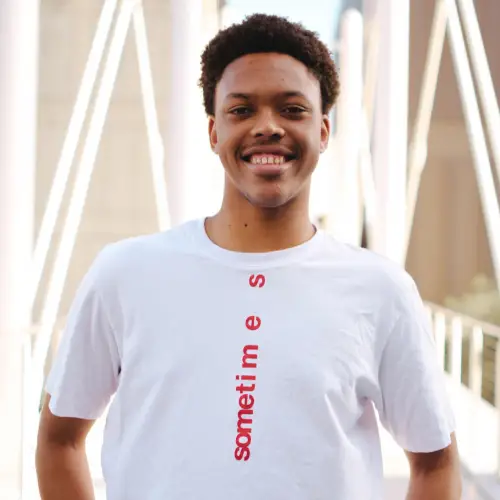Originally launched in March 2016, Instagram’s algorithm was announced to ensure that users would “see the moments [you] care about first.” A study conducted by Instagram revealed that, on average, users missed about 70 percent of posts in their feed before the algorithm’s launch. But, whether or not abandoning the chronological feed setup was a success lies in the hearts and minds of Instagram’s users. Right now, many are not happy.
So here’s what’s really going down. Essentially, Instagram operates on the basis of viewer attention. For example, the more time I spend viewing and interacting with my favorite Instagram influencer’s profile, via likes, story views, time spent on each post, swiping up and down or reading comments, the more relevant Instagram views that page’s content will be for my individual feed.
This is why accounts that you interact with most will frequently appear on your home feed. Additionally, this is the way that social relevance is measured by advertisers.
In theory, all of that makes great sense. If someone is gaining tons of views and likes, then by common logic their account contains content that is relevant and should be highlighted for everyone to see.
In fact, this is how the market of social media as a form of income has surged in recent years. In 2017 it was reported that accounts with 100,000 followers were able to make up to $5,000 per sponsored post. Further, some influencers even noted banking between $20,000 and $150,000 per campaign, which includes multiple sponsored posts, discount codes and story posts.
Well, here’s where things get a little murky. Obviously, not all of Instagram’s users are touting millions of followers, but the algorithm affects everyone based on this logic anyway. So, when you mix popular accounts and smaller ones, both of which a typical user might be following, your feed can become oversaturated with pictures and videos from big-name accounts.
How It Works
Think of it as a tryout for your post to be shown to more than only a fraction of your followers. Under the algorithm, when you post a photo or a video, Instagram will only show that post to about 10 percent of your followers.
If that doesn’t already seem like a slight, the app will then measure the post’s productivity. Next, it compares how well that post performed under it’s “test run” to that of your other photos and videos.
Depending on how much engagement your post saw, it will either be deemed “relevant content” and released to an increased number of your followers, or it will be pushed down your feed for a smaller number of your followers to see if it doesn’t size up. This method is being used every time you post, and your posts are being filtered away for your audience accordingly.
The Problem
As of Sept. 2017, Instagram has clocked over 800 million users worldwide. At our fingertips is the ability to connect with tons of people in our local networks and beyond by the tap of a screen, making it the ideal way to elicit effective branding for small businesses, artists, nonprofits, start-ups and more.
While the new algorithm may seem like a clever gatekeeper for users to see only the content that matters to them, for many small business owners and independent artists who use social media to drive traffic for their endeavors, the algorithm is instrumentally damaging their visibility.
Understandably, Instagram’s antics have become a source of frustration for users who feel as though their reach on the platform has been handicapped. Here’s what a couple of users have said via Twitter:
this new instagram algorithm is garbage and it’s just going to hurt small artists like myself, i went from getting 600-1000 likes to getting a hefty 300 👍🏻 god i miss chronological timelines.
— Jake Johnston (@Jake_Johnstonn) February 2, 2018
https://twitter.com/nialloxyloto/status/959280669321936896
The Solution
Typically, social media users have grown accustomed to timeline algorithms. This kind of programming on platforms lists posts in reverse chronological order so that users can engage in real-time updates. Twitter has even grown to seamlessly incorporate the most popular content into the timeline scheme, offering live updates while also displaying content from while the user was away.
Still, amidst all of the frustration, it didn’t take long for users to begin finding ways to finesse their way around the social platform’s tricky new gimmick. One of these solutions is to join what users are now calling an “Instagram pod.”
The idea is to join a community of users, usually within similar interest networks, and to aggregate likes for each other by letting everyone know when you have posted on Instagram, allowing you to bypass the algorithm. Users in pods will give each other boosts in engagement, which leads Instagram to deem everyone in the pod’s content relevant, allowing for further engagement outside of the group.
Another more simple way to increase your engagement on Instagram is to post during your feed’s most active hours. It goes without saying that you will get the most engagement out of your followers when you post at times that Instagram activity is significant. A post at five in the morning, for example, won’t do nearly as well as one at five in the evening.
Recently, a report released by Sprout, a social media management company, illustrated that the best times to post on Instagram are Mondays through Thursdays at two in the morning and five in the evening. Being cognizant of when you’re posting so that people will interact with your posts will help avoid being gridlocked by Instagram’s algorithm.
While there doesn’t seem to be any changes to Instagram’s algorithm coming soon, the platform has rolled out a new update that allows users to jazz up their Insta stories even more. With the use of gifs and new options for typeface, such as Modern, Neon and Typewriter, sometimes a story post can be just as engaging for your followers as a profile post.
Instagram has released no official comment or statement concerning issues with the algorithm.

















